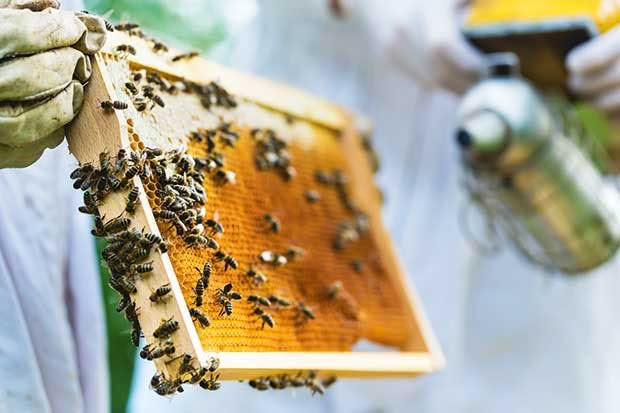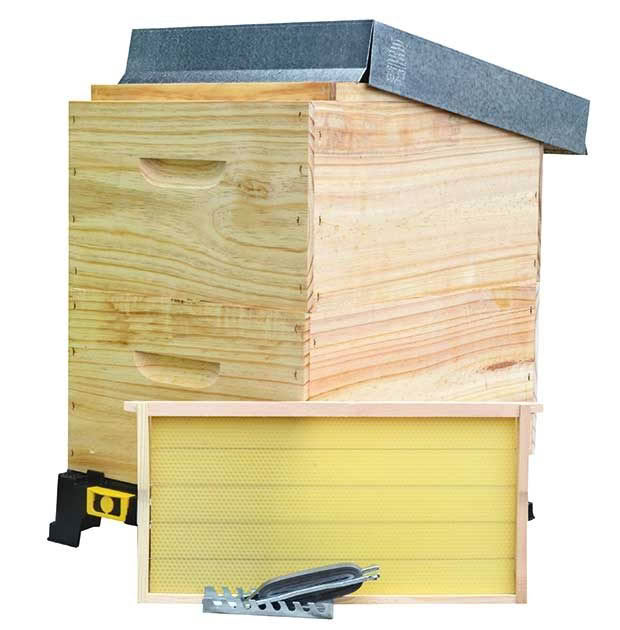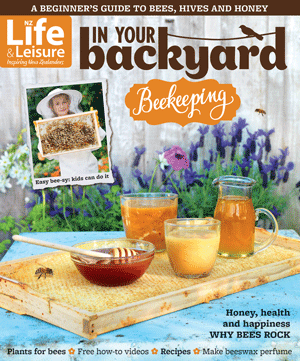Everything you’ll need to start beekeeping (PLUS how much it will cost)

The essential equipment you will need and how to find it.
Words: Lucy Tasker
When you start beekeeping, the amount of equipment on offer can seem overwhelming. There’s a lot of it: hive boxes, boards, frames, straps, wax, feeders, mats, a suit, gloves, and all the useful tools and accessories. Here’s the basic list of what you’ll need to get started.
Beekeeping suit, gloves, hood/veil
This clothing is the most important equipment you’ll buy, and it’s worth investing in. It’s all that stands between you and a lot of bee stings. You may be able to find them cheap or secondhand, but they do degrade over time. The possibility of a suit breaking or ripping mid-inspection isn’t worth the risk.
Hiveware
Hives are the most obvious equipment a beekeeper needs, but there are many parts to a hive, some essential, some optional. You can buy ready-to-go (RTG) hives which come to you assembled and ready to use.
The essential parts of a hive are a bottom board (we recommend the Hive Doctor Bottom Boards), a bee box (also called a storey or super), frames, hive mat, and roof. It can be useful to get a hive strapper to hold the hive boxes together.

Buying second-hand hives on Trade Me or through a beekeeping group is possible. It’s important to check that they’re in good condition before you buy. You’ll need to clean them thoroughly to make sure they’re not harbouring disease or pests.
Be aware that some diseases – particularly American Foulbrood Disease (AFB) – cannot be eradicated by cleaning. The only way to get rid of AFB is to burn the affected equipment. If you do choose to buy second-hand hives, try to buy from a trusted source.
Tools
Every beekeeper needs a couple of good hive tools and a smoker. Your hive tools will make it easier to prise boxes apart, separate frames, and do other jobs that need a bit of leverage or dexterity.
Some hobbyists resist buying a smoker, but when you’re starting out it’s worth calming the bees using smoke.
When browsing online, you may notice tools such as vaporisers and bee blowers. These help improve efficiency in large-scale operations, but are costly and not usually worth it for a hobby beekeeper.
Extracting & packing
Extracting honey involves handling food. Buy new, clean, and fit-for-purpose gear, even if you don’t plan to sell your product.
Honey can be stored in any lidded jar. Start a collection of empty jars by asking around friends and family. You want ones with secure-fitting lids. Thoroughly wash and sterilise jars before you use them.
It’s easy to get carried away buying high-end equipment and every accessory, but putting together a basic set-up doesn’t have to be hugely expensive.
HOW MUCH WILL YOU SPEND?
This can vary a lot depending on whether you choose new or second-hand equipment, and the type of frames, suit, and tools you choose. The minimum cost to set up, if you’re prudent, would be $400-$600 for a suit, frames, and tools, but doesn’t include the bees, an extractor, or extra boxes you’ll need if your hive swarms.
In Your Backyard: Beekeeping is packed with useful beekeeping tips and tricks. This special edition of NZ Life & Leisure includes everything a beginner beekeeper needs to know about honey, hives and harvest. It’s easybeesy with this beautiful and inspirational magazine full of detailed, step-by-step information and video tutorials.
MORE HERE:
Love this story? Subscribe now!
 This article first appeared in NZ Lifestyle Block Magazine.
This article first appeared in NZ Lifestyle Block Magazine.

